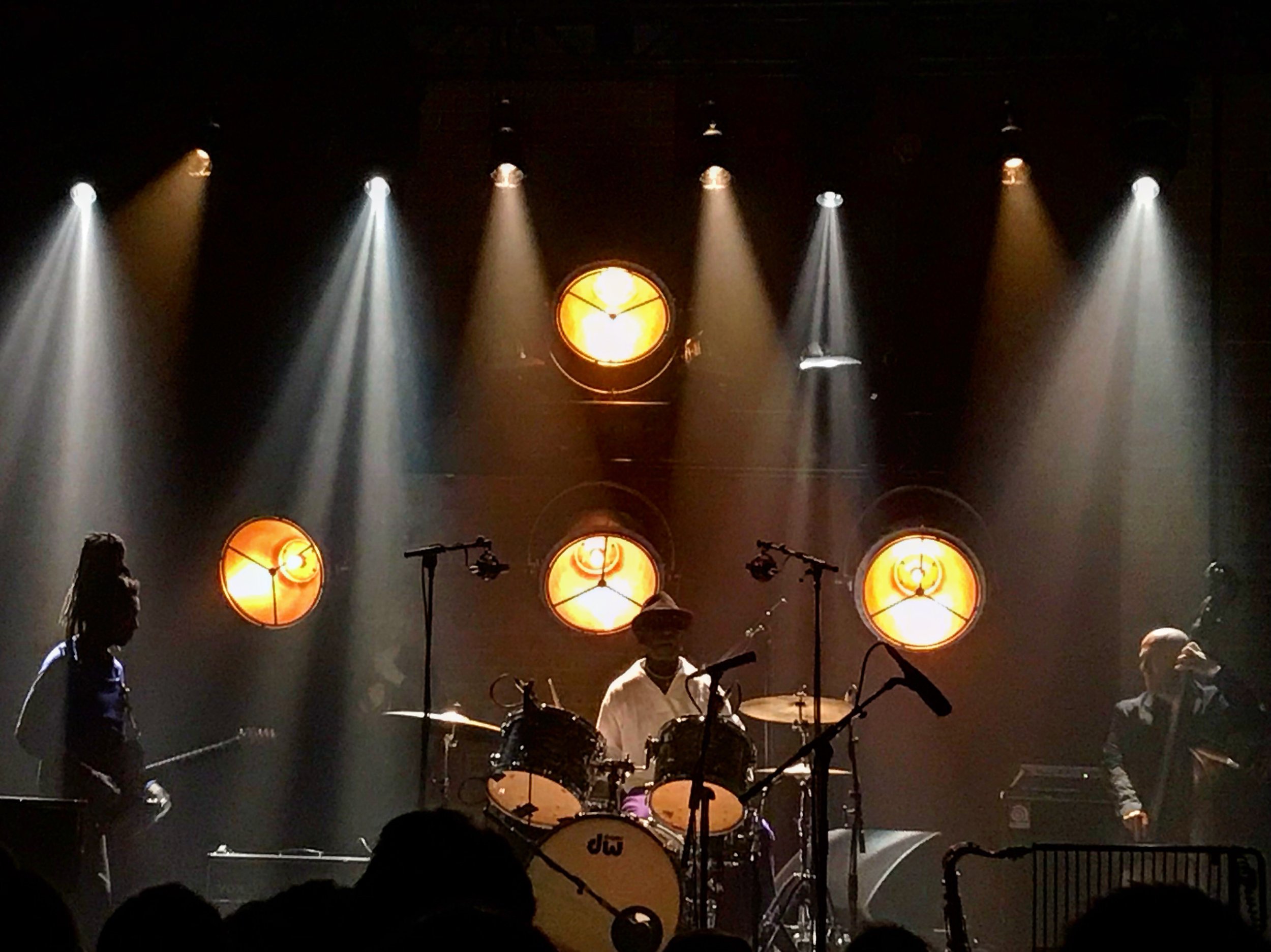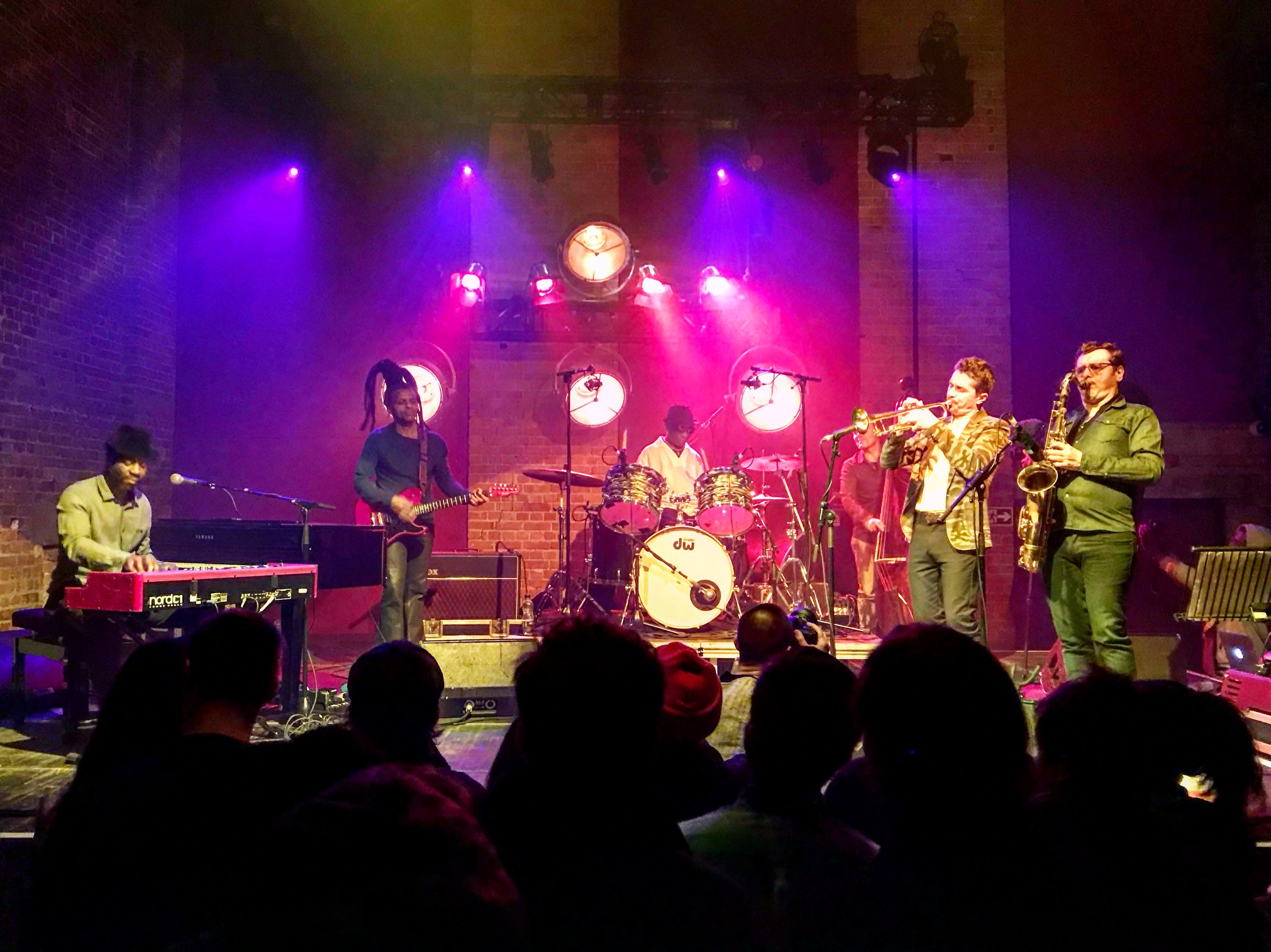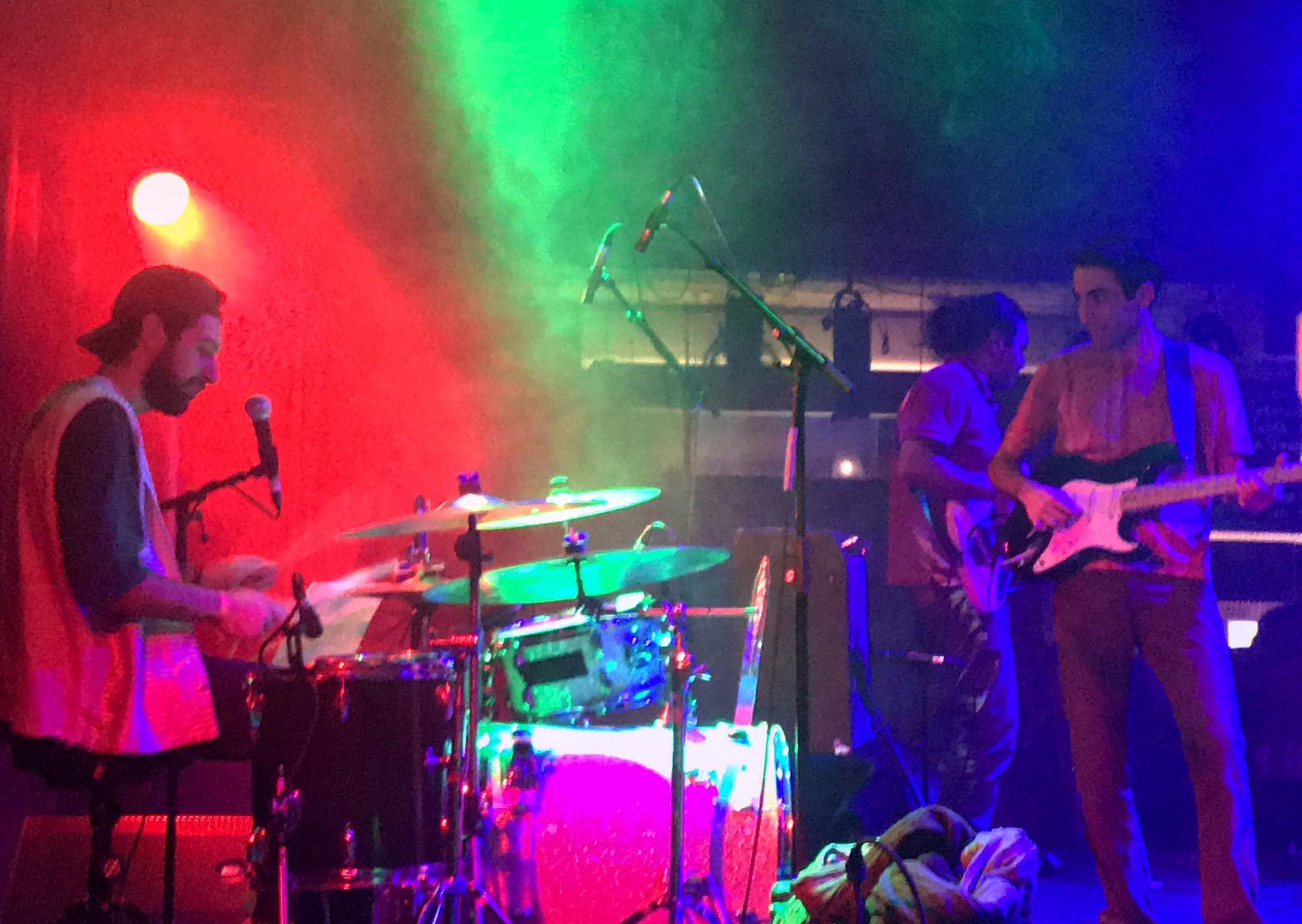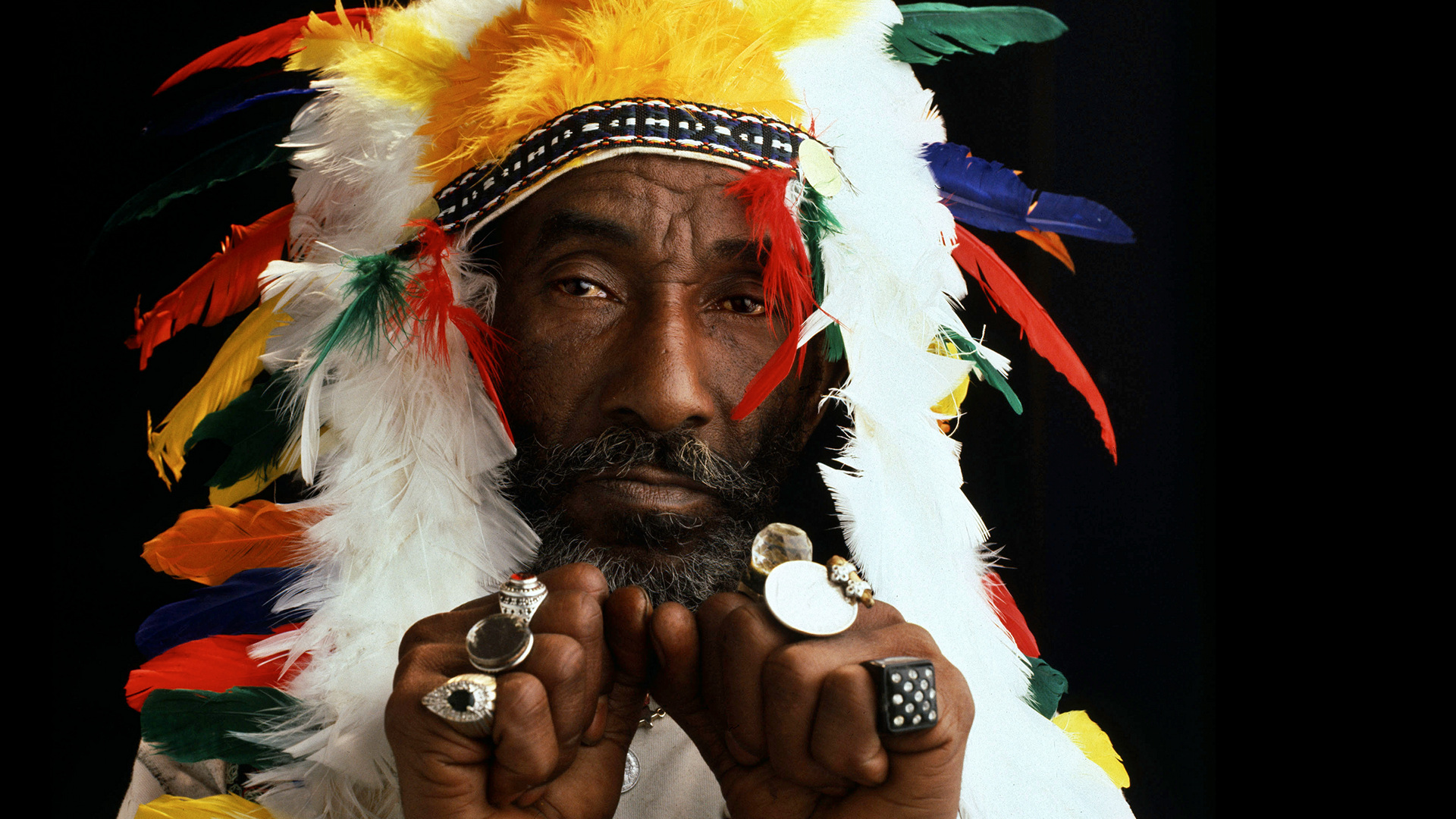Tony Allen
@ Village Underground 09.02.18
Photo by Sophie Darling
09.02.18
Village Underground (East)
Tony Allen and Band
@ Village Underground 09.02.18
Photo by Matt Prev
Getting off the bus in East London proved to be a freezing cold endeavour. I felt grateful my evening was consisting of standing inside a potentially very hot protected building. I made my way to the Village Underground.
What is Afrobeat?
It’s hard to think of genres of music originated from Africa that are well known to the average Westerner much outside of the ‘world music’ boundaries. One stands rather clear however, having been popularised and developed in the late 1970’s, ‘afrobeat’ managed to break through borders and become a well known genre globally outside of it’s insemination in Africa.
Fela Kuti pioneered afrobeat, having studied music in England and in Africa, he wanted to distinguish the music making from Nigeria where he was from, the beautiful funky soul full music they were making, and point out it’s differences to what was happening in the West at the time, such as the soul music of James Brown.
Mixing jazz and funk with elements of Western African musical styles such as jùjú and highlife, afrobeat really focuses on complex jazz rhythms, over African percussions and famously stunningly long musical interludes showcasing stunning improvisational solo’s from an array of instruments. Noticeable, one would think somewhat immediately off the saxophone as that was Fela Kuti’s primary instrument, as well as being a multi-instrumentalist.
Tony Allen
Reasons why it is ok to say that Tony Allen is a living legend, a pioneer of music, and a fundamental character in the musical make-up of North West Africa: Tony Allen played on the first 35 studio albums that Fela Kuti and the subsequent ‘Africa 70’ albums produced, therefore Tony Allen played a fundamental and imperative role in shaping the genre of afrobeat. Known globally as if not THE best (Damon Albarn and Brian Eno have said many times he is) drummer on Earth, Tony Allen is said to be able to play different time signatures on each limb. Tony Allen played such complex cross-rythms on Fela Kuti’s recordings that when it came to gigging, no other drummer could replace Tony. They could simple only replicate the music if Tony Allen himself was there.
Finally it isn’t that Tony Allen played drums FOR Fela Kuti who in turn innovated the genre of afrobeat. The innovation also imperatively lies with Tony Allens rhythms: the propulsive polyrhythms new beats, inspired by the fusion of African musicality, such as the Yoruba religious musical conventions that have been borrowed and adapted, morphed even by Tony. Allen then shaped these new musicalities, moulding a new groove to match what Fela Kuti was creating with his band the Africa 70’, AKA the foundations of a new genre: afrobeat. Therefore Tony Allen surely is one of the only percussionists alive to lay claim to the innovation of an entire rhythm, beat and way of playing the drums that lent itself to the invention of afrobeat as a global, as well as locally, loved genre.
Furthermore, not only has Tony Allen played on over 35 studio albums with Fela Kuti, he has created 17 personal solo studio albums, a further seven collaborative albums, and featured on endless albums as guest drummer. All together, Tony Allen has featured in one way or another on over seventy five studio albums, now seventy eight years old, Tony has an album for nearly every year of his life. His later material revisiting his earlier jazz routes. ‘The Source’ being his latest release (2017) is a debut full-length album for Blue Note Records. Claiming that freedom is in full flow, Tony Allen thinks that this new album is his best work as a drummer, free of all limitations, it truly explores the freedom of what it means to be Tony Allen behind a drum kit.
The Village Underground
The venue as always is a pleasure to go to, set in an old underground station, the bar tucks neatly under an archway, with the cloak room and toilets there immediately as you enter. Then to your left is the large hall with double high arched ceilings, the walls red brick, and the stage at the far end of the arch. The stage was set with a cross of large lights that looked like old airplane fans. In the middle of the stage there stood loud and proud the drum kit of Tony Allen, all spot lights central around this.
I got myself a drink from the somewhat reasonably priced bar, and waited the evening ahead. The DJ was playing a mix of African high life and disco, all very funky movable songs. The audience filled the floor with casual dancing.
Around 10pm, the lights went down and the show started. Joining Tony Allen on the stage was a sax player, trumpet, piano (set up with a rowland keys and a full grande piano, an electric guitarists and a stand up bass. Lastly Tony Allen himself comes out looking fresh faced, and energetically ready. He took up spot on the drums and we were away.
Tony Allen and Band
@ Village Underground 09.02.18
Photo by Sophie Darling
The rest of the evening consisted of a jazz enthralled journey. Each piece jamming out for long periods of time, each embezzled with jazz solos on the sax and solos on the trumpet, and sometimes solo’s from both in sync. Furthermore, the pianist was a stunner to watch, playing the grande piano with his left hand, keeping the cyclical melodic lines going, whilst simultaneously his right hand solo’s on the keyboard. The stand up bass had solos that were beautiful, funky and encapsulating, as well as the guitarist. Each musician played perfectly, with crips, clear notes, stabbing stops and harmonious harmonies. The music was really of the highest quality.
The framing for Tony Allens set was perfect, the lighting of the stage set the scene that something special was taking place, with Tony Allen rightfully placed as the central piece in the middle fo the stage, most spot lights highlighting his drumming throughout. Watching Tony Allen drum so freely, so easily and with such complexity was a real treat to any jazz fan.
The audience swayed along to the jazz the whole evening long. Unable to control themselves when a suggested end fo the show came, the audience demands more more more tunes, and Tony Allen and band accept the offer. Tony Allen, in his 70’s is know for his ferocious playing of the drums, a tiring discipline, only Tony Allen who played with Fela, famous for playing all night long, or for at least 6 hours at a time, can play for hours and hours impeccably. He says he finds it hard to Finnish after only two hours.
However in the two hours of Tony Allen played drums for myself and a room full of adoring fans in the Village Underground Allen managed to display, and prove why his legacy stands so highly regarded in the world of music.
For many I think the evening seemed as a once-in-a-lifetime opportunity. I certainly felt honoured to have witnessed Tony Allen drumming, the greatest drummer alive, some might say.
Tony Allen
@ Village Underground 09.02.18
Photo by Sophie Darling



















